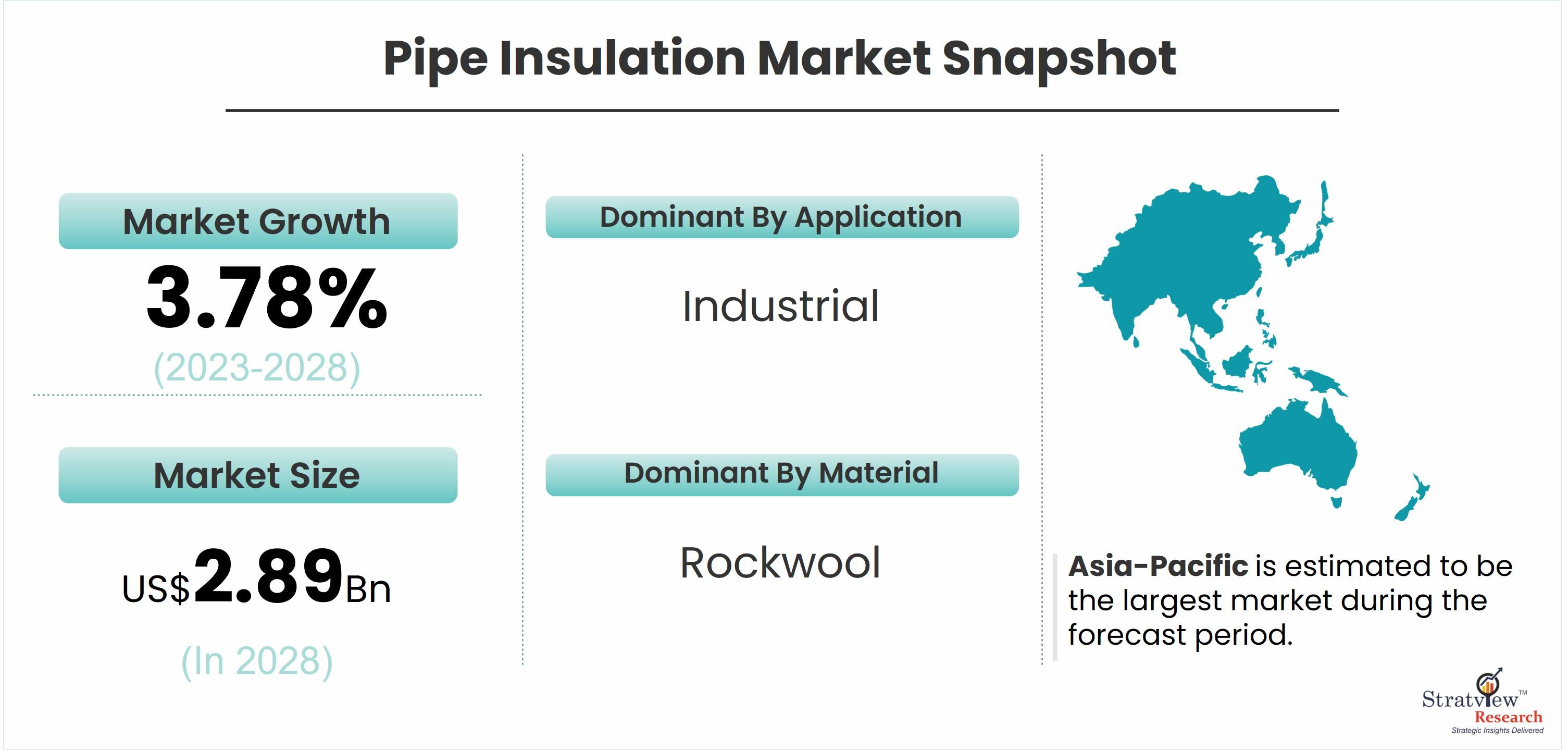According to Stratview Research, the pipe insulation market was estimated at USD 2.31 billion in 2022 and is likely to grow at a significant CAGR of 3.78% during 2023-2028 to reach USD 2.89 billion in 2028.
Selecting the right pipe insulation is a crucial decision in construction and maintenance projects. Whether you're insulating pipes in a residential setting or an industrial facility, the choice of insulation material can significantly impact energy efficiency, maintenance costs, and overall performance. In this comprehensive guide, we'll explore the factors to consider when choosing the right pipe insulation for your specific needs.
1. Consider the Operating Temperature:
The first and most critical factor to consider when selecting pipe insulation is the operating temperature of the pipe. Pipes that carry hot fluids, such as steam or hot water, require insulation materials with a high-temperature resistance rating. Conversely, pipes carrying cold fluids need insulation that can prevent condensation and maintain lower temperatures.
2. Evaluate the Insulation Material:
Various insulation materials are available, each with its own set of properties. Here are some common types of pipe insulation materials:
Fiberglass Insulation: This material is a popular choice for its excellent thermal performance and resistance to moisture. It is suitable for both hot and cold applications and is commonly used in commercial and industrial settings.
Foam Insulation: Foam insulation, such as polyurethane or polyethylene foam, is lightweight, easy to install, and suitable for residential applications. It provides good thermal insulation and is available in various forms, including pre-slit and self-sealing tubes.
Mineral Wool Insulation: Mineral wool is fire-resistant and offers excellent thermal and acoustic insulation properties. It is often used in high-temperature industrial applications.
Reflective Insulation: Reflective insulation consists of foil or aluminum-backed materials that reflect heat. It is effective in both hot and cold climates and is often used in HVAC systems.
Calcium Silicate: This material is ideal for high-temperature applications, such as in industrial facilities or power plants. It can withstand temperatures of up to 1,200°C (2,200°F).
Choose the insulation material that best suits the temperature requirements and environmental conditions of your project.
3. Determine Thickness and R-Value:
The thickness of the insulation material is crucial for its effectiveness. Thicker insulation typically provides better thermal performance. Insulation thickness is often measured in inches, and it should meet the required R-value for your specific application.
The R-value represents the insulation's thermal resistance—the higher the R-value, the better the insulation's ability to resist heat transfer. Different applications require different R-values, so it's essential to consult building codes and standards or seek guidance from insulation experts to determine the appropriate R-value for your project.
4. Consider Environmental Factors:
Environmental conditions, such as humidity, moisture, and exposure to chemicals, can impact the performance and durability of pipe insulation. Some insulation materials are more resistant to moisture and chemicals than others. For outdoor applications or areas prone to high humidity, consider materials that have excellent moisture resistance.
5. Installation Ease:
The ease of installation can significantly affect project timelines and costs. Some insulation materials, like pre-slit and self-sealing foam tubes, are straightforward to install and require minimal additional accessories. Others may involve more complex installation procedures and may necessitate specialized tools.
6. Maintenance and Durability:
Consider the long-term maintenance requirements and durability of the insulation material. Insulation that is resistant to wear and tear, pests, and corrosion will likely require less maintenance and have a longer service life.
7. Cost Considerations:
Finally, cost is a significant factor in the decision-making process. While it's essential to stay within your budget, prioritize the selection of insulation materials based on the factors mentioned above. Quality insulation may have a higher upfront cost but can result in significant energy savings and reduced maintenance expenses over time.
In conclusion, choosing the right pipe insulation is a critical decision that can have a profound impact on your project's performance and efficiency. Carefully evaluate factors such as operating temperature, insulation material, thickness, environmental conditions, ease of installation, maintenance requirements, and cost considerations. By doing so, you can ensure that your insulation choice aligns with the specific needs of your project, whether it's in a residential, commercial, or industrial setting, and ultimately achieve optimal energy efficiency and long-term savings.


